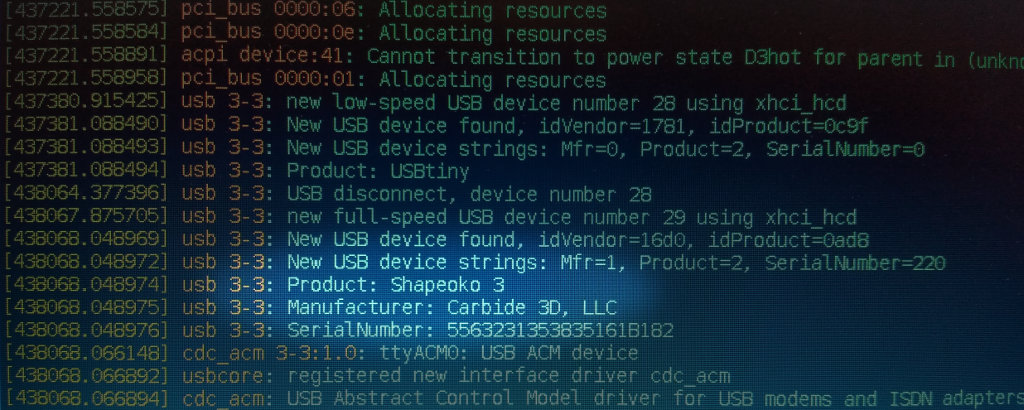
After killing it, replacing the Atmega 16U2 IC and re-flashing it, our Shapeoko 3 Driver Board Registers on the USB Bus
A few weeks ago while cutting out some wooden letters for one of my Wife’s Christmas present projects, our Shapeoko died. The machine itself appeared to be OK, but it disappeared off the USB bus, and was never seen or heard from again. I tested the traces on the board, and verified pin to pin continuity between the USB connector and the Atmega 16U2 IC, which it’s driver board uses instead of an FTDI or similar USB to TTL Serial converter. Normally when you plug in any USB device to a Linux computer, you see [something] in the dmesg output – even if it has no drivers for the device and in many cases even when the device does not even work. (I recently ran into a case where a USB device kept complaining that it was “unable to enumerate USB device” – but the kernel was still aware of its’ presence on the bus.) In this case, plugging in our Shapoko yielded nothing. Not even the awareness of something drawing power off the port.
I traced out the pins, made sure the zeners weren’t bridged, and I could connect to the 16U2 via the ICSP header (in fact, I was able to save the binary program from it along with all it’s fuse bits!) However, despite all this, it simply did not work. This evening Jeremie replaced the 16U2 with a new one that arrived today from Digikey, I re-loaded the binary programs from the old chip into the new one and voila: The screen shot you see above! Now all I need to do is re-assemble the machine and test it with a real live cut, but that should be peanuts at this stage now that it is alive and well again.
I just love fixing things!
